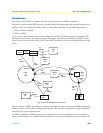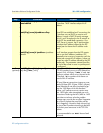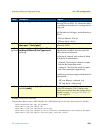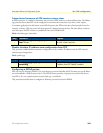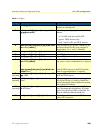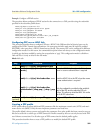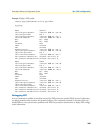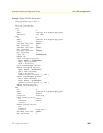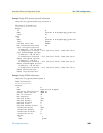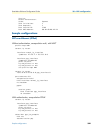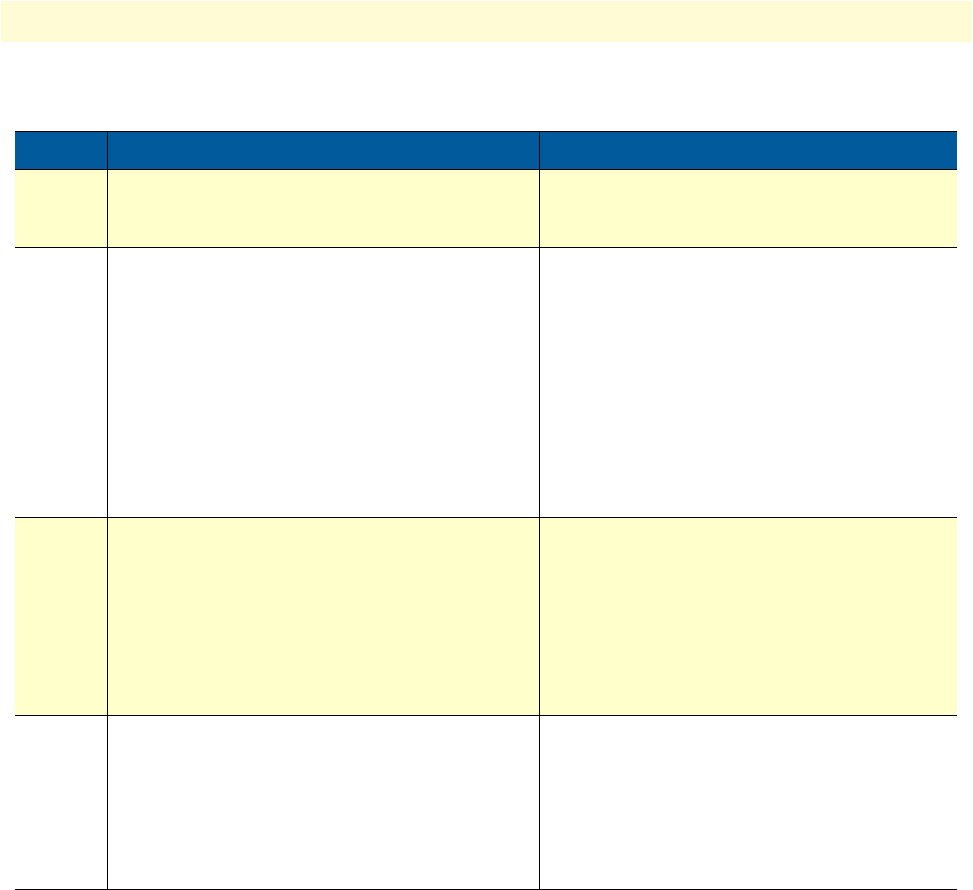
PPP configuration task list 322
SmartWare Software Configuration Guide 30 • PPP configuration
Mode: Configure
Example: Create a PPP profile
The procedure below creates a PPP profile, sets some of its parameters, and assigns it to a PPPoE session.
node(cfg)#profile ppp PPPoE
node(pf-ppp)[PPPoE]#mtu min 68 max 1492
node(pf-ppp)[PPPoE]#mru min 68 max 1492
node(pf-ppp)[PPPoE]#van-jacobson compression
node(pf-ppp)[PPPoE]#port ethernet 0 0
node(prt-eth)[0/0]#pppoe
node(pppoe)[0/0]#session green
node(session)[green]#use profile ppp PPPoE
Step Command Purpose
1 node(cfg) #[no] profile ppp { name |
default }
Creates the new PPP profile name and enters
the PPP profile configuration. The profile
‘default’ already exists.
2
(optional)
node(pf-ppp)[name]#mtu min min max
max
Defines the minimum and maximum size of IP
packets (in Bytes) allowed on the outbound PPP
connection. Outbound packets larger than the
maximum size are fragmented into smaller
ones if allowed.
The default value is 1492 Bytes.
On the IP interface over which the PPP connec-
tion runs, the minimum of the IP interface MTU
and PPP MTU applies.
3
(optional)
node(pf-ppp)[name]#mru min min max
max
Defines the minimum and maximum size of IP
packets (in Bytes) allowed on the inbound PPP
connection. The default value is 1492 Bytes.
Inbound packets larger than the maximum size
are fragmented into smaller ones if allowed.
The default value is 1492 Bytes.
4
(optional)
node(pf-ppp)[name]#[no] van-jacobson
{compression|decompression} max-slots
max-slots
Allows PPP to use Van Jacobson header com-
pression for TCP packets. Only the negotiation
between the PPP peers determines whether this
header compression is really used. max-slots
determines the maximum number of concurrent
TCP sessions for which header compression
shall be done. The default is 31.



